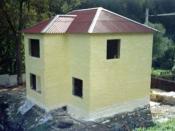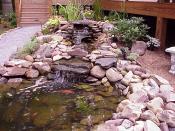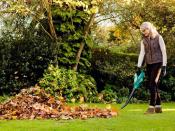Search
Login
Recommended
How to choose the right glue so that everything sticks together, the properties of polyurethane glue, polyester glue, polyamide glue, epoxy glue, PVA glue
Previously, when the floor was made of wood, fastening was done using nails. But now there is a huge amount of flooring, and these coatings have different qualities. Correctly selected glue will emphasize the advantages of coatings, smooth out imperfections and help to avoid mistakes during installation.
Content
- What properties should I look for when choosing glue?
- Types of glue
- Water based glue - acrylic and PVA video
- Polyurethane adhesive
- Polyester adhesive
- Polyamide adhesive
- Epoxy adhesive video
- How to glue tiles, porcelain tiles, natural and artificial stone video
- How to glue linoleum and carpet
- Parquet adhesive video
- How to work with glue
What properties should I look for when choosing glue?
Glue is selected taking into account certain parameters.
Adhesion - or the property of adhesive sticking to the base material. The higher the adhesion, the better the adhesive, as this guarantees the strength of the coating.
Fast setting - this moment is important when working with rolled floor coverings. The edges of the roll tend to return to their original state, in order to prevent this return, the glue should have sufficient stickiness. This stickiness is created by organic and inorganic modifiers, and their amount is selected depending on the type of coating.
Elasticity is an important point for hard coatings. The elasticity of the glue is especially important if it is used for laying tiles on the street.
Due to the temperature expansion of the material due to natural atmospheric changes, so that the tile does not lag behind the base, high elasticity of the adhesive is required, for this a large amount of polymer modifier is added to the mixture.
Water resistance - especially relevant when using glue in wet rooms, for laying underfloor heating, for outdoor use.
To increase water resistance, special additives are included in the glue.
Frost resistance is an important point for the glue used outdoors. Special additives help the adhesive withstand temperature fluctuations from low minus to high plus.
The presence of water is an important point when using glue for wood and similar materials. Polyurethane adhesive does not contain water at all - a universal adhesive for any wood. To work with wood, it is good to use special adhesives on an alcohol solvent, since it is able to quickly evaporate and the wood does not swell.
Environmental safety - according to the requirements of building chemistry, only harmless materials can be used.
Types of glue
To work with flooring, two types of glue are used - polymer and polymer cement.
Polymer cement glue is a cement mortar in which a different amount of adhesive, different plasticizers, modifying additives are added.
Depending on the starting material, the amount of additives is changed and the solution acquires the desired property.
Using this glue, various types of ceramic tiles, porcelain stoneware, natural and artificial stone are laid.
Materials such as wood, laminate, carpet, linoleum, i.e. soft materials are glued using polymer compositions.
Such compositions are based on high molecular weight chemical compounds, they have high resistance in an aggressive environment, have good elasticity, strength and various useful properties.
At the same time, depending on the material, when developing the adhesive formulation, the composition and structure change.
Polymer adhesives are produced on the basis of water, liquid rubber, epoxy resin, polyester, polyamide, etc.
Polymer glue is one and two-component.
The two-component adhesive consists of a polymer and a hardener, before their use, the polymer and hardener are mixed, adjusted to a uniform and desired consistency.
Water based glue - acrylic and PVA
Water-based acrylic and polyvinyl acetate (PVA) adhesives in the form of emulsions are produced.
Emulsions create vapor-permeable coatings, have high light resistance and weather resistance.
Such glue has good adhesion to many substrates, penetrates deeply into the porous base and strengthens it.
PVA glue is in the lead due to its high chemical resistance, quick setting, it does not form foam and has a faint odor.
PVA glue is easy to use in work, it is able to maintain its properties at low and high temperatures, after freezing and thawing.
Modern developments of PVA glue have improved the quality of this glue, finished products using PVA glue can be operated even at high humidity.
Polyurethane adhesive
The basis of polyurethane glue is liquid rubber, the glue does not contain water and this is its advantage - this glue is universal, it is resistant to chemicals, ultraviolet, moisture, thermal shock.
Compounds using polyurethane adhesive can be operated at temperatures from -60 * С to + 120 * С.
This glue provides high bond strength, prevents fungi and mold from developing, it perfectly fills the joints, its use is completely safe for humans.
Polyurethane adhesive has excellent adhesion to stone, metal, ceramics, wood, glass.
Polyester adhesive
The main advantage of polyester glue is its ability to transmit up to 92% of ultraviolet rays.
Polyester glue creates a transparent layer.
Polyamide adhesive
Polyamide glue creates compounds that are resistant to aggressive environments: alcohol, acid, alkali, gasoline.
But these compounds are unstable to prolonged exposure to water.
Polyamide adhesive has high elasticity, therefore it is used for bonding leather, plastic, glass and wood.
Epoxy adhesive
Epoxy adhesive - wear-resistant, resistant to chemical attack, dust free.
Epoxy glue is often used to sticker flooring in an industrial plant, under the influence of an aggressive environment on the flooring.
How to glue tiles, porcelain tiles, natural and artificial stone
Solid materials, such as porcelain stoneware, natural and artificial stone can be glued with mixtures based on cement.
To improve the bonding quality, polymer binders are added to the cement.
For indoor work, and for outdoor work, different mixes are used.
This rule applies to different types of tiles.
There are universal compounds, they can glue different materials.
Universal glue contains expensive modifying components, i.e. universal glue, is an expensive glue.
If you want to reduce the cost of work, for this choose the glue suitable for a specific case.
For working with tiles outdoors - purchase a mixture with high elasticity, the same mixture is also suitable for working in unheated rooms.
When facing warm floors, glue with high elasticity is also used.
On each package of glue, the conditions for the use of the composition must be indicated, unless the moisture and frost resistance parameters for outdoor work are indicated on the label - such glue cannot be used outdoors.
How to glue linoleum and carpet
When working with rolled coatings, it is necessary to use a water-dispersion adhesive based on acrylic or vinyl acetate.
Such glue has good adhesion to linoleum and carpet.
But since the edges of the roll coating tend to return to their original position, before planting on the glue, the coating must lie down for several days on the floor and even out on its own.
When choosing glue for a roll coating, it is necessary to pay attention to the basis of this coating, and it can be woven or non-woven, synthetic or natural.
For example, linoleum has a waterproof base, so the glue should be with a minimum liquid content.
To evaporate residual moisture from under the linoleum, its seams are left open for 10 hours.
If a new roll coating is laid on top of the old one - choose an adhesive that has good adhesion to the base material.
Parquet adhesive
To prevent the parquet from peeling off, it must be glued with highly elastic glue, the glue must have good adhesion to the organic - PVA or polyurethane.
Polyurethane adhesive does not contain water, so it is perfect for moisture sensitive species (maple, beech, ash, birch).
You can use glue on an alcohol solvent, as the solvent quickly evaporates.
Water-dispersive glue can be used with oak and acacia parquet.
It is good to glue a massive board with two-component glue, as it quickly hardens and is very durable.
How to work with glue
When working with glue, it is very important to use a notched trowel.
Toothed spatulas are classified, most often, A2 and B1 are used.
With the help of spatulas, the adhesive mass is leveled, excess glue is shifted, only glue remains in the form of grooves, then it spreads and forms an even thin layer, with a thickness of 1 to 1.5 mm.
Certain types of glue are applied by spray or roller.
Before gluing, it is necessary to prepare the base.
The floor must be horizontal, if the horizontal is not observed, it is leveled with a screed or self-leveling floors.
If there are small irregularities, they simply putty.
It is very important to dry the substrate well, since if there is residual moisture, the floor covering may peel off.
To determine the drying of the base, there are instruments for measuring residual moisture.
After the leveling layer has completely dried, dust is removed and a primer is applied.
The primer increases adhesion, the adhesive will adhere well, will dry evenly and adhere firmly to the surface.
After spreading the glue, before laying the coating, the glue should dry for 15-40 minutes.
To find out if the glue has dried, use a fingertip to press the glue layer, if the glue does not stick to your hand, you can lay the coating.
Remember! The key to success is quality materials.





